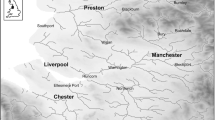Abstract
Collaborative planning processes have become increasingly popular for addressing environmental planning issues, resulting in a number of conceptual models for collaboration. A model proposed by Selin and Chavez suggests that collaboration emerges from a series of antecedents and then proceeds sequentially through problem-setting, direction-setting, implementation, and monitoring and evaluation phases. This paper summarizes an empirical study to evaluate if the Selin and Chavez model encompasses the range of factors important for the establishment and operation of collaboration in watershed planning from the perspective of the planning coordinator. Analysis of three case studies of watershed based planning efforts in the Intermountain West suggests the model realistically describes some of the fundamental collaborative elements in watershed planning. Particularly important factors include the involvement of stakeholders in data collection and analysis and the establishment of measurable objectives. Informal face-to-face dialog and watershed field tours were considered critical for identifying issues and establishing trust among stakeholders. Group organizational structure also seems to play a key role in facilitating collaboration. From this analysis, suggestions for refining the model are proposed.
Similar content being viewed by others
Author information
Authors and Affiliations
Rights and permissions
About this article
Cite this article
BENTRUP, G. Evaluation of a Collaborative Model: A Case Study Analysis of Watershed Planning in theIntermountain West. Environmental Management 27, 739–748 (2001). https://doi.org/10.1007/s002670010184
Issue Date:
DOI: https://doi.org/10.1007/s002670010184




